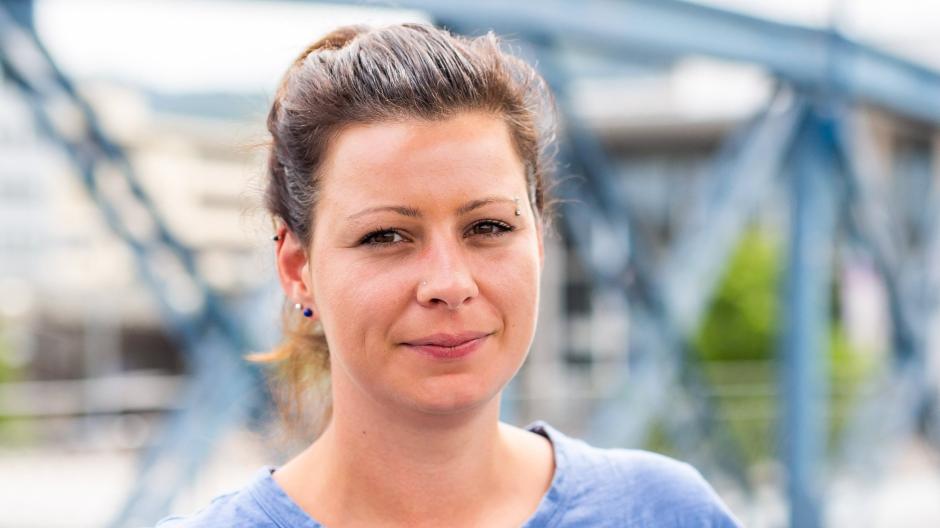According to the Ifo Institute, violence by football fans causes 44 million euros in damage every year. However, there are some arguments against a structural problem of violence.
By the end of March at the latest, everything should be back to normal in Germany’s sports stadiums. If the corona situation has relaxed by then, around 350,000 people should make a pilgrimage to the stadiums of the first Bundesliga every weekend, just like before the pandemic began. So everything good? According to a study by the Ifo Institute: Not at all.

Fan spokeswoman Helen Breit is critical of the Ifo study.
Photo: Philipp von Ditfurth, dpa
A research team analyzed the impact of around 4,500 matches from 2011 and 2015 and concluded that football fan violence during that period caused around €194 million in damage, or €44 million annually.
To do this, the researchers examined how many simple physical injuries there were in connection with matches in the top three football leagues. Accordingly, in the four and a half years of the investigation period, the police had expressed this initial suspicion and initiated investigations a total of 38,268 times, based on the nationwide police crime statistics.
The Ifo researchers put each physical injury at 5,000 euros
According to the head of the Ifo Center for Labor Market and Population Economics, Helmut Rainer, another study formed the basis for determining the extent of the damage. According to this, every physical injury ties up an average of 5,000 euros in working hours for the police, the public prosecutor’s office, the courts and loss of earnings on sick leave. The number of violent crimes on days with football increases by 21.5 percent compared to the same weekdays without a game.
Fan spokeswoman Helen Breit is critical of the Ifo study
Helen Breit is critical of the Ifo Institute’s investigation. She is the chair of the nationwide fan initiative “Our Curve” and criticizes both the approach and the presentation of the study. She criticizes that one did not strive for proper comparisons for football games in the first three leagues: “These are major events with several thousand visitors, so you need a correct comparison size, such as folk festivals.”
Also read about this
If you take a day without a football game as a comparison, it is clear that more crimes can then be expected. “There can be problems with mass gatherings of predominantly young men. But if you use the wrong reference value, it just distorts the picture.”
In addition, you have to put the number of crimes in context: With around half a million visitors in the first three leagues on every single match day, 38,268 crimes spread over four and a half years are not excessive – especially since the police statistics only show the number of suspicions. The proceedings that have been discontinued are not recorded therein. Breit’s conclusion: “We don’t have a specific problem of violence in football. And if you put it that way, populist demands are made that don’t get us anywhere.” According to a study by “Unsere Kune”, between 0.003 and 0.007 percent of visitors to a football stadium have been reported injured over the past twelve years.
The damage is put into perspective when you look at the DFL numbers
The German Football League (DFL) did not want to comment on the study when asked. A look at the balance sheet figures of the Bundesliga puts the damage to the general public into perspective somewhat: the 44 million euros in losses in the 2019/20 season are a turnover of 3.8 billion euros in the 1st Bundesliga and tax payments of 1, 4 billion euros in the first two leagues. A total of 52,786 were attached to football this season.
One requirement of the study, on the other hand, has already been implemented to the greatest possible extent: because police officers were victims of the crime in the majority of cases of bodily harm, the police presence should be reduced – de-escalation instead of deterrence, so to speak. But that is already happening. In Bavaria, for example, the number of police hours in games up to the fourth-tier regional league fell from 279,742 (2015/16 season) to 227,869 in the 2018/19 season, the last before the outbreak of the pandemic. The number of police officers injured at football matches also fell from 49 (2015/2016 season) to 17 (2018/2019). According to the police, there are no indications of a general problem of violence.
We want to know what you think: The Augsburger Allgemeine is therefore working together with the opinion research institute Civey. What the representative surveys are all about and why you should register, read here.